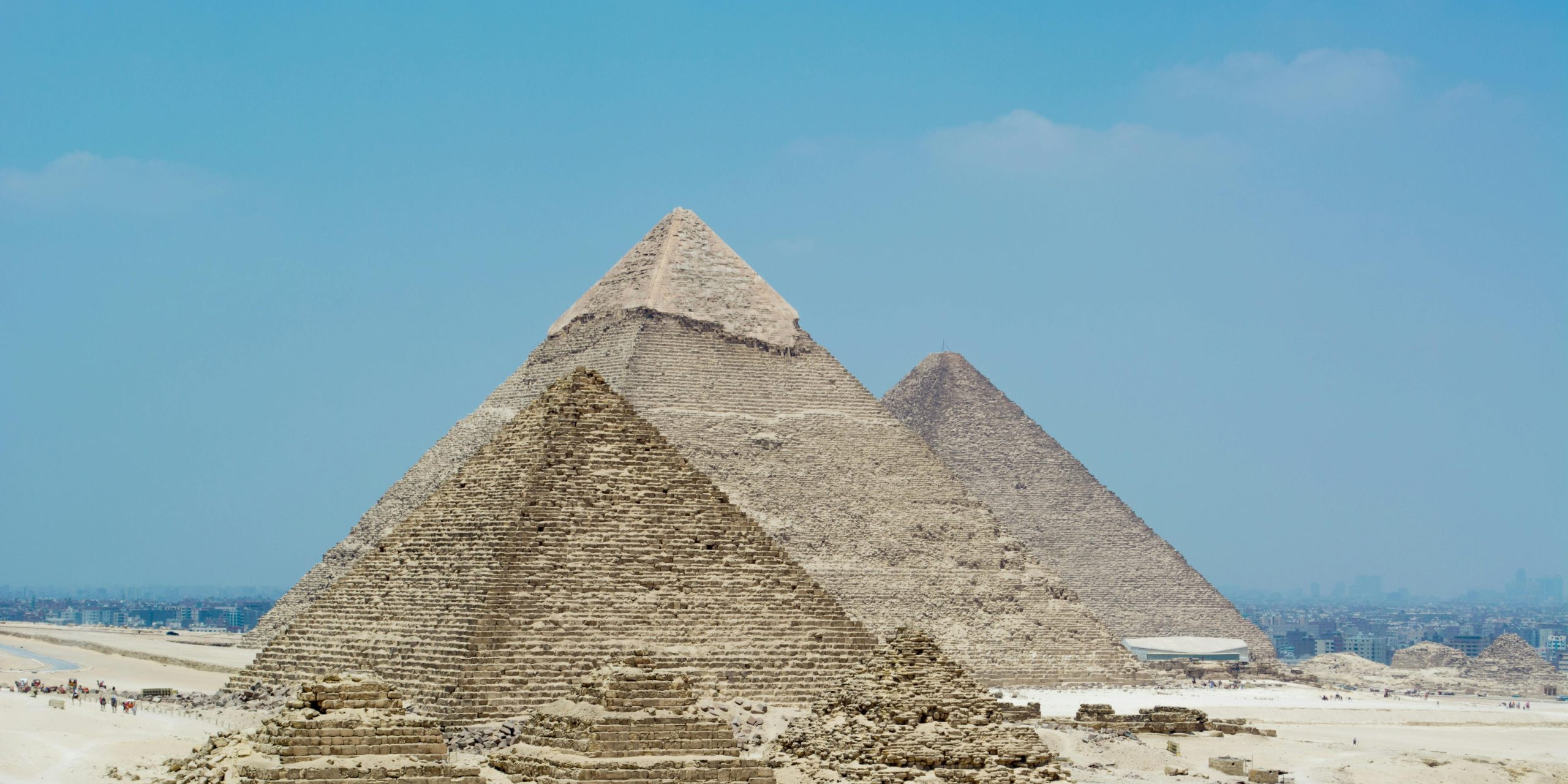Are the Great Pyramids of Giza merely monumental tombs, or do they hold secrets that could redefine our understanding of ancient civilizations? These architectural wonders, constructed around 2580-2560 BC during Egypt’s Old Kingdom, are the last of the ancient world’s Seven Wonders still standing. Built as eternal resting places for pharaohs, these pyramids not only symbolize Egyptian ingenuity and national unity but also provide a tangible link to an era that valued legacy and the afterlife. In this article, we delve into the historical significance of the Great Pyramids of Giza, exploring their cultural and religious roles in ancient Egyptian society.
Historical Significance of the Great Pyramids of Giza
The Great Pyramids of Giza, constructed during the Fourth Dynasty of the Old Kingdom of Egypt around 2580-2560 BC, were built as monumental tombs for the pharaohs Khufu, Khafre, and Menkaure. These pyramids were designed not only to house the remains of these rulers but also to ensure their safe passage to the afterlife. Commissioned by these powerful leaders, the construction of the pyramids required vast resources and labor, reflecting the centralized power and organizational capabilities of ancient Egyptian society.
In ancient Egyptian culture, the pyramids held profound religious significance. They were considered the pharaohs’ eternal homes, designed to facilitate their journey to the afterlife and serve as a testament to their divine status. The pyramids’ alignment with the cardinal points and their meticulous construction using millions of limestone blocks symbolize the ingenuity and advanced engineering skills of the ancient Egyptians. Moreover, as the last remaining of the Seven Wonders of the ancient world, the pyramids embody the enduring legacy and national unity of Egypt, standing as timeless monuments to the pharaohs’ grandeur and the civilization’s architectural prowess.
- Tombs for the pharaohs
- Symbols of Egyptian ingenuity
- Representation of national unity
- Last remaining ancient wonder
- Legacy of the pharaohs
Architectural Marvel of the Great Pyramids of Giza
The Great Pyramids of Giza stand as a testament to ancient Egyptian engineering prowess. The largest, the Great Pyramid of Khufu, was originally 146.6 meters tall. Today, it is slightly shorter due to the loss of the outer casing stones. The Pyramid of Khafre, while appearing taller due to its higher location on the plateau, measures 136.4 meters in height. The smallest of the three, the Pyramid of Menkaure, stands at 65 meters. These structures were built with millions of limestone blocks, each weighing several tons. The architectural accomplishments of these pyramids are evident in their sheer scale and the precision with which they were constructed.
- Great Pyramid of Giza height: 146.6 meters
- Pyramid of Khafre height: 136.4 meters
- Pyramid of Menkaure height: 65 meters
- Great Pyramid base length: 756 feet
- Remarkable alignment to cardinal points
The engineering precision of the Great Pyramids is particularly notable. Each pyramid’s base is aligned with remarkable accuracy to the cardinal points, a feat achieved without modern tools. The Great Pyramid’s base measures 756 feet on each side and is almost perfectly level. This precise alignment demonstrates the advanced understanding of astronomy and geometry possessed by ancient Egyptian architects. The meticulous planning and execution required to achieve this level of precision underscore the architectural brilliance behind these monumental structures.
| Pyramid | Original Height (meters) | Base Length (feet) |
|---|---|---|
| Khufu (Great Pyramid) | 146.6 | 756 |
| Khafre | 136.4 | 704 |
| Menkaure | 65 | 356 |
Construction Methods of the Great Pyramids of Giza
The construction of the Great Pyramids of Giza is a marvel of ancient engineering, requiring a massive labor force and advanced techniques. Evidence suggests that the workforce comprised skilled craftsmen and seasonal laborers. A permanent group of skilled workers, alongside a seasonal crew of approximately 2,000 conscripted peasants, was responsible for the construction. These seasonal workers were likely employed during the agricultural off-season. Teams of around 20 men could move 2.5-ton blocks in about 20 minutes, showcasing the remarkable organization and labor efficiency.
Theories about how the pyramids were built primarily revolve around the use of ramps and levers. One widely accepted theory is the use of straight or circular ramps to move the massive stone blocks into place. These ramps could have been built from mudbrick, limestone chippings, and clay. Lever systems might have also been employed to lift the stones. The combination of these methods would have allowed the ancient Egyptians to construct the pyramids with the precision and scale observed today.
Recent archaeological discoveries have further illuminated the logistical aspects of pyramid construction. Findings at Wadi el-Jarf, an ancient port on the Red Sea, include the world’s oldest papyri, detailing the transportation and organization of materials. These documents provide a glimpse into the meticulous planning that went into building the pyramids. Such discoveries underscore the complexity and sophistication of the construction process, revealing a highly organized and resourceful ancient society.
- Use of ramps
- Lever systems
- Skilled craftsmen
- Seasonal labor force
- Recent discoveries at Wadi el-Jarf
- Detailed construction records
Archaeological Discoveries at the Great Pyramids of Giza
Archaeological excavations at the Great Pyramids of Giza have unearthed a wealth of tools, artifacts, and insights into ancient burial practices. These discoveries include various tools that were likely used in the construction of the pyramids, such as copper chisels and stone hammers. Additionally, artifacts like pottery, jewelry, and everyday items have been found, providing a glimpse into the lives of the workers and the society that built these monumental structures.
Recent findings at Wadi el-Jarf, an ancient port on the Red Sea, have revealed the world’s oldest papyri. These documents detail the logistics of the pyramid’s construction, including the transportation of limestone blocks from Tura to Giza. Such records offer invaluable information about the organization and planning that went into the construction, highlighting the complexity and efficiency of ancient Egyptian engineering.
Inside the Great Pyramid, the king’s chamber stands out as a marvel of construction. Built entirely of granite, it features a sophisticated system of chambers and passageways designed to protect the pharaoh’s tomb. Advanced scanning techniques have also identified a mysterious void within the pyramid, sparking ongoing curiosity and further research into its purpose and construction.
- Tools and artifacts
- Burial practices
- Oldest papyri records
- King’s chamber and granite construction
- Mysterious void inside the pyramid
Visiting the Great Pyramids of Giza
The Giza Plateau is a treasure trove of ancient wonders, including the iconic Great Pyramids and the enigmatic Great Sphinx. In addition to these monumental structures, the plateau is home to a variety of tombs, temples, and smaller pyramids, offering visitors a comprehensive glimpse into ancient Egyptian civilization. Key attractions include the Pyramid of Khufu, the Pyramid of Khafre, and the Pyramid of Menkaure. The Great Sphinx, with its lion’s body and human head, stands as a guardian to these pyramids, adding to the site’s allure. The plateau also features a worker’s town, which provides fascinating insights into the lives of the laborers who built these architectural marvels. Evidence unearthed at the site suggests that these workers were well-fed, indicating a well-organized and resourceful society.
Visitors planning a trip to the Giza Plateau have several ticketing options and activities to choose from. Day tours are popular and often include guided visits to the pyramids, the Sphinx, and various tombs and temples. For a unique experience, camel safaris are available, allowing visitors to explore the site from a different perspective. Entry to the Egyptian Museum, which houses numerous artifacts from the Giza Plateau, can also be included in tour packages. The museum offers a deeper understanding of the historical and cultural significance of the pyramids through its extensive collection. Visitor amenities, such as rest areas and souvenir shops, are conveniently located around the site. Nearby attractions, including the Solar Boat Museum and the Valley Temple, further enrich the visitor experience, making a trip to the Giza Plateau both educational and memorable.
- Day tours
- Camel safaris
- Entry to the Egyptian Museum
- Workers’ town
- Visitor amenities
- Nearby attractions
Interesting Facts about the Great Pyramids of Giza
The Great Pyramids of Giza are not just monumental tombs but also repositories of fascinating and lesser-known facts. Contrary to popular belief, these pyramids were not built by slaves, but by a workforce of around 100,000 seasonal workers. These laborers were well-organized and well-fed, reflecting the sophisticated social structure of ancient Egypt. The construction of the Great Pyramid alone required over 6 million tons of stone, a testament to the Egyptians’ engineering capabilities. Advanced scanning techniques have recently revealed a mysterious void inside the Great Pyramid, adding another layer of intrigue. Additionally, the Great Pyramid once had a smooth, white limestone casing that reflected the sun’s rays, making it shine like a “gem” in the desert.
- Workforce and labor organization
- Amount of stone used
- Precise alignment
- Mysterious void
- Original limestone casing
Final Words
The Great Pyramids of Giza, built during Egypt’s Fourth Dynasty, are marvels of ancient engineering and cultural significance. These pyramids served as tombs for pharaohs, symbolizing Egyptian ingenuity and unity, and stand as the last remaining Wonder of the ancient world.
In terms of architecture, their precise dimensions and alignment with cardinal points highlight an impressive level of ancient craftsmanship. Theories on their construction range from ramps to lever systems, supported by recent archaeological discoveries.
Archaeological finds and modern scanning techniques reveal more secrets of these ancient structures. For visitors, the Giza Plateau offers a blend of historical insights and engaging activities.
Understanding the Great Pyramids of Giza enriches appreciation of their historical and architectural significance. They remain a testament to the remarkable achievements of ancient Egyptian civilization.
Top Attractions
Did you know that nestled just a couple of hours from…
Are you ready to uncover the hidden gem of the Western…
Can a beach still be a hidden gem in today's well-charted…
What if you could explore a hidden gem of ancient…
Is it possible that South Africa's best-kept wildlife…
Can you imagine a place where conservation efforts began…
Is finding tranquility in the bustling city of Cape Town a…
Have you ever wondered what it would be like to explore one…










